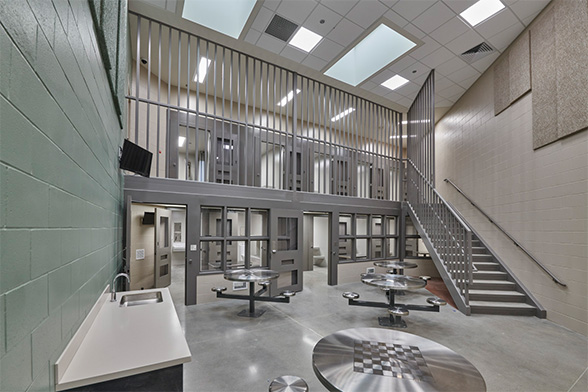
Brookings County Detention Center
A complete replacement of the Brookings County jail and law enforcement facilities, replacing an aging and inadequate law enforcement and jail facility.Read More
BKV Group believes that the human-nature relationship and human health are essential in the correctional environment for the overall well-being of jail staff and the residents in their custody. With a design focus on rehabilitation and restoration, we take a multi-disciplinary approach to creating therapeutic spaces and calm environments focusing on safety and security supporting the mind, body, and social health in the facility.

Our core belief is that architecture has a profound responsibility to the community, and regardless of the project type, our duty is to always enhance the economic, aesthetic, social, and environmental context of the communities we work in. More than 45 years later, this vision has not changed. Today, we provide our government clients with superior customer service by adopting the client’s goals as our own, enabling transparent decision-making, committing to responsible spending of public funds, and remaining passionate about the success of the communities for whom we work. BKV Group has assembled a highly experienced and skilled group of architects, engineers, designers, and planning professionals who have spent a majority of their careers working in justice architecture with a special focus on jail design. Our in-house staff has experience on more than 70 detention projects representing more than 180,000 beds nationally. We offer comprehensive services include pre-design studies (facility assessments, operational assessments, projections, space programming, concept design and costs) and full design services (schematic design through construction administration) for additions and renovations and new construction.
BKV Group is not content to provide status-quo jail solutions. That said, many of our projects represent innovative design that solve each client’s individual needs. With all jail designs across many diverse jurisdictions, some key considerations are always necessary. Our experienced jail designers will assist with weighing the various choices that fall within these categories with the cost and design best representing your values.
These key considerations include:
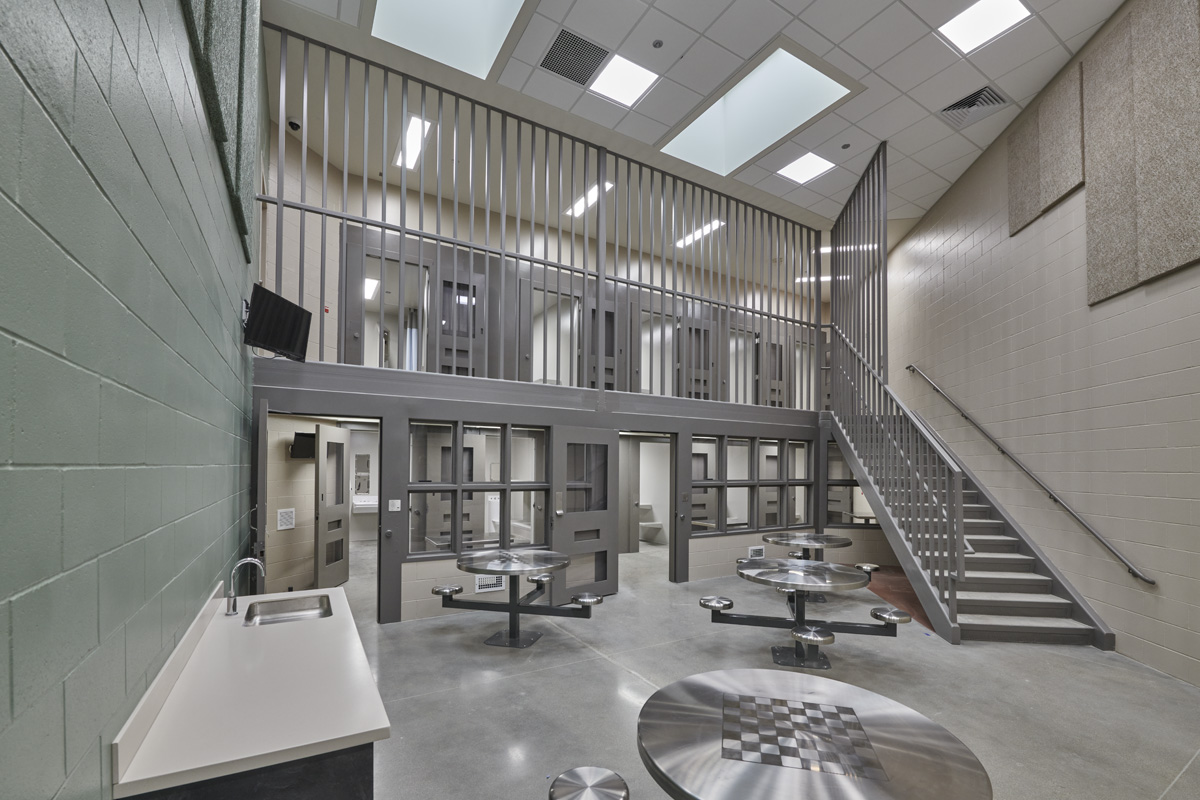
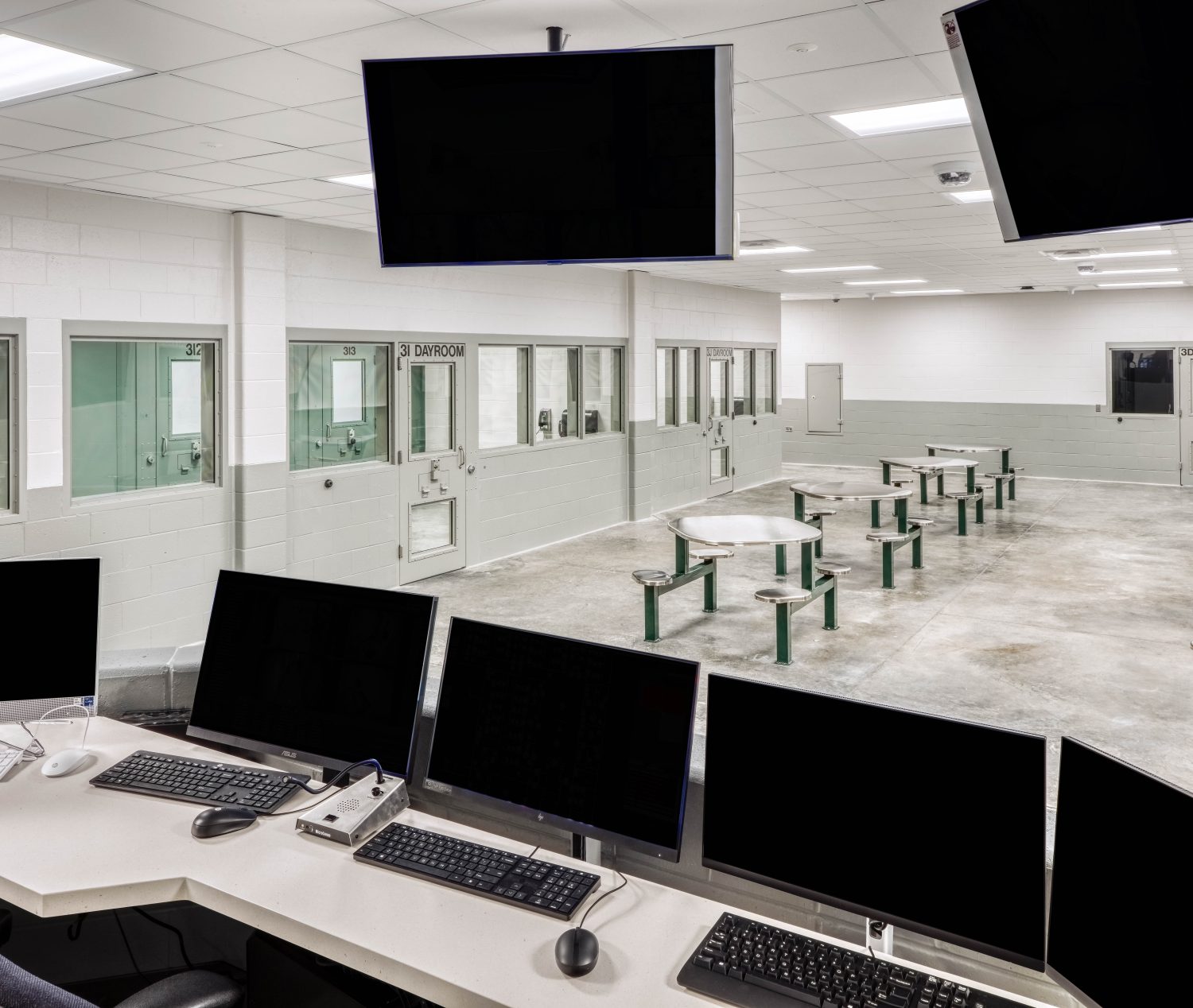
INFECTIOUS DISEASE CONTROL
The key words are ventilation, air flow management, and air purification as the response required to keep staff and people in their custody safer. Concepts that should be applied include increased outdoor air ventilation rates to dilute the return air stream with variable-speed fan motors that control of the speed of airflow; use laminar flow air distribution versus mixing air flow patterns; provide localized exhaust system for source control in high risk areas; install filters with increased efficiencies and enhanced particle filtration capacity (MERV) to the greatest extent possible; and consider ultraviolet-C light (UV-C) to deactivate pathogens.
ENHANCED INTAKE CENTER
A growing body of evidence suggests that the first 24- to 48-hours of the experience and environment that a person in jail encounters is the most critical regarding their outcomes in their court case, and their well-being and mental health. The modern intake center must balance security, health, and efficiency in obtaining information from the arrestee during the booking process while subtly trying to relieve stress of the arrestee. Special considerations regarding infection control and safety of the staff are critical in this zone where everyone begins the process in intake. Notable changes to the intake center include: faster, easier assessment process; more private check-in process, and improved acoustics.
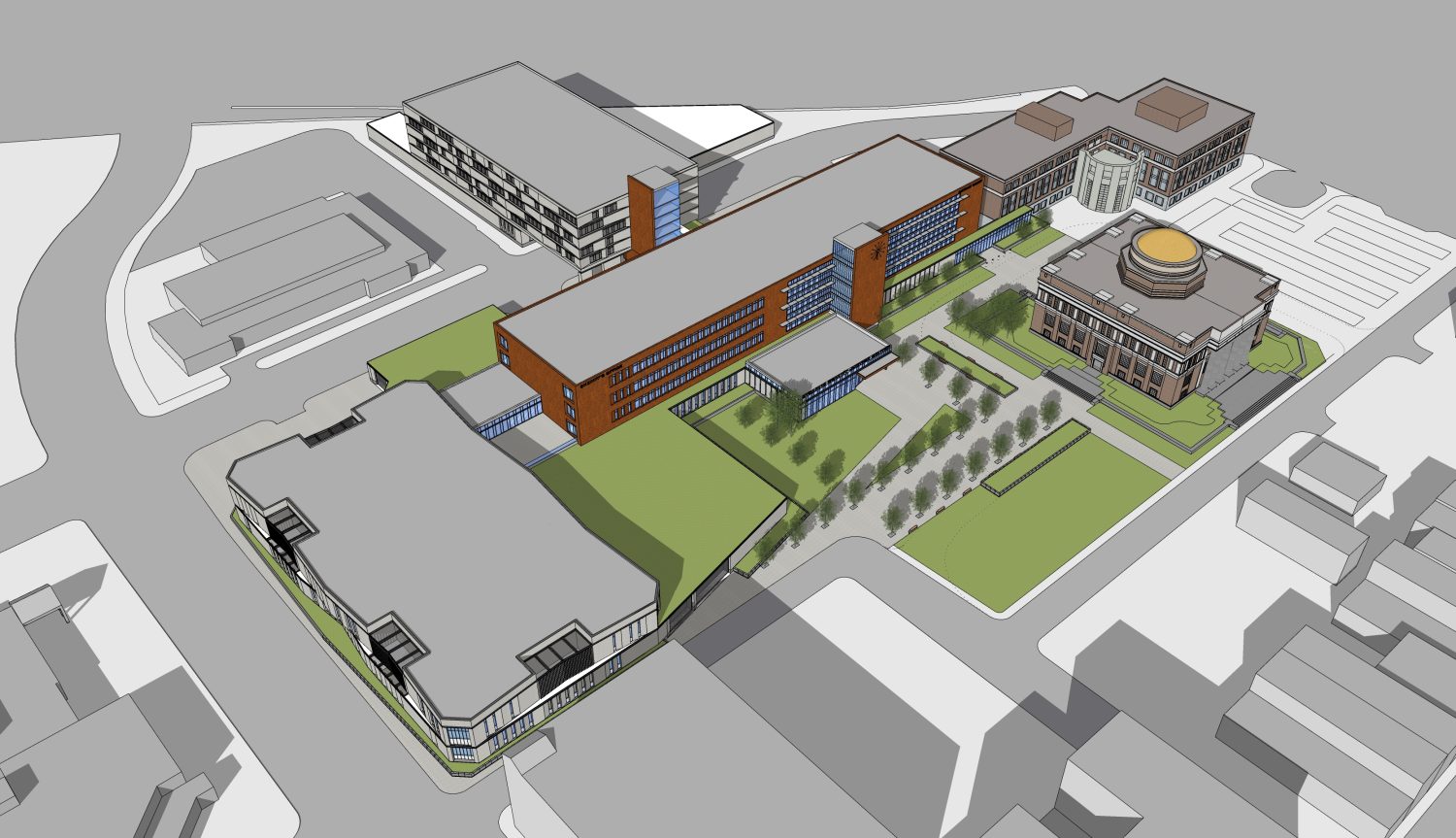

Government Practice Leader, Senior Partner
Minneapolis, MN

Justice Practice Leader, Partner
Chicago, IL
HENRY PITTNER TAKES PART IN CORRECTIONAL NEWS ROUNDTABLE
BKV Group’s Justice Practice Leader and Partner, Henry Pittner, was asked to discuss justice and correctional trends in the latest issue of Correctional News with Henry observing “a shifting of paradigms from a carceral model” to one “that is more healing and restorative.”
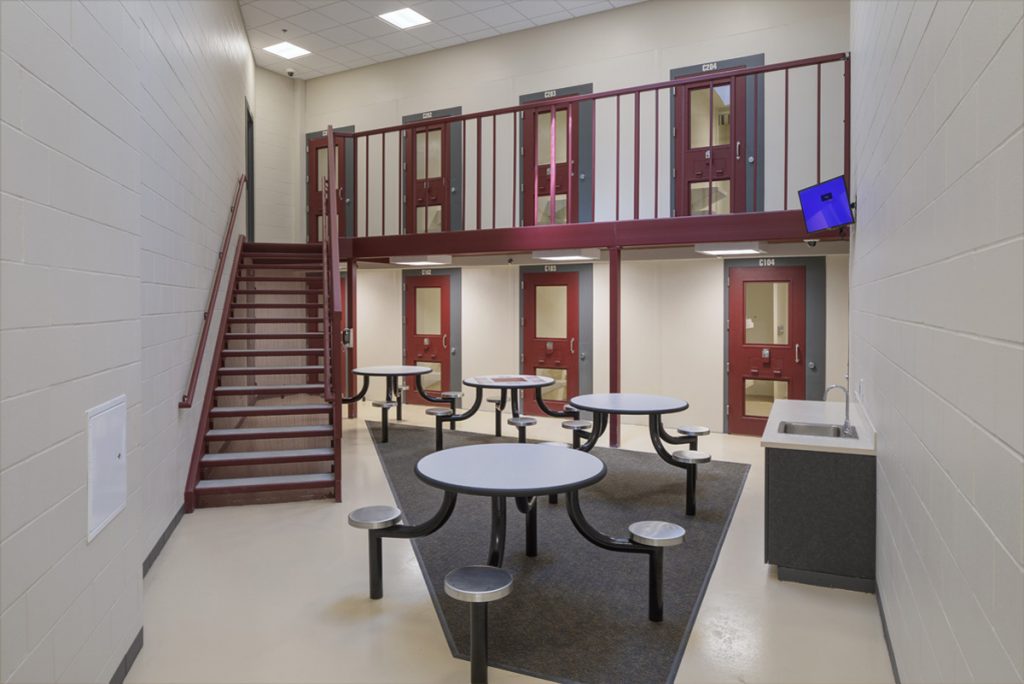

HENRY PITTNER POSITS A POST-CARCERAL JAIL OF THE FUTURE TO CORRECTIONALNEWS
Although jail design has evolved through the years, the environments can be physically and psychologically harmful. In response, BKV’s Justice Practice Leader, Henry Pittner, illustrates how a post-carceral jail of the future can shift the paradigm – from punishing and punitive, to healing and restorative.
NEW JUSTICE COMPLEX IN MICHIGAN HAS IT ALL
“When it comes to making a complex endeavor look easy, a recently completed project in Mason, Mich., may serve as example 1A for 2023.” In the April Facility of the Month issue, Correctional News interviewed BKV Group’s Justice Practice Leader and Partner, Henry Pittner, to obtain his insights on the BKV-designed Ingham County Justice Center Complex. Henry discusses challenges overcome, key trends in justice/correction design which Ingham exemplifies, and how Ingham effectively balances safety and security with a welcoming aesthetic.
